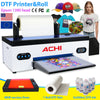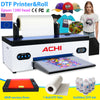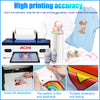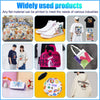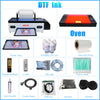White Toner Printer Vs. ACHI A3 Roll DTF Printing: What You Need to Know Before You Buy?
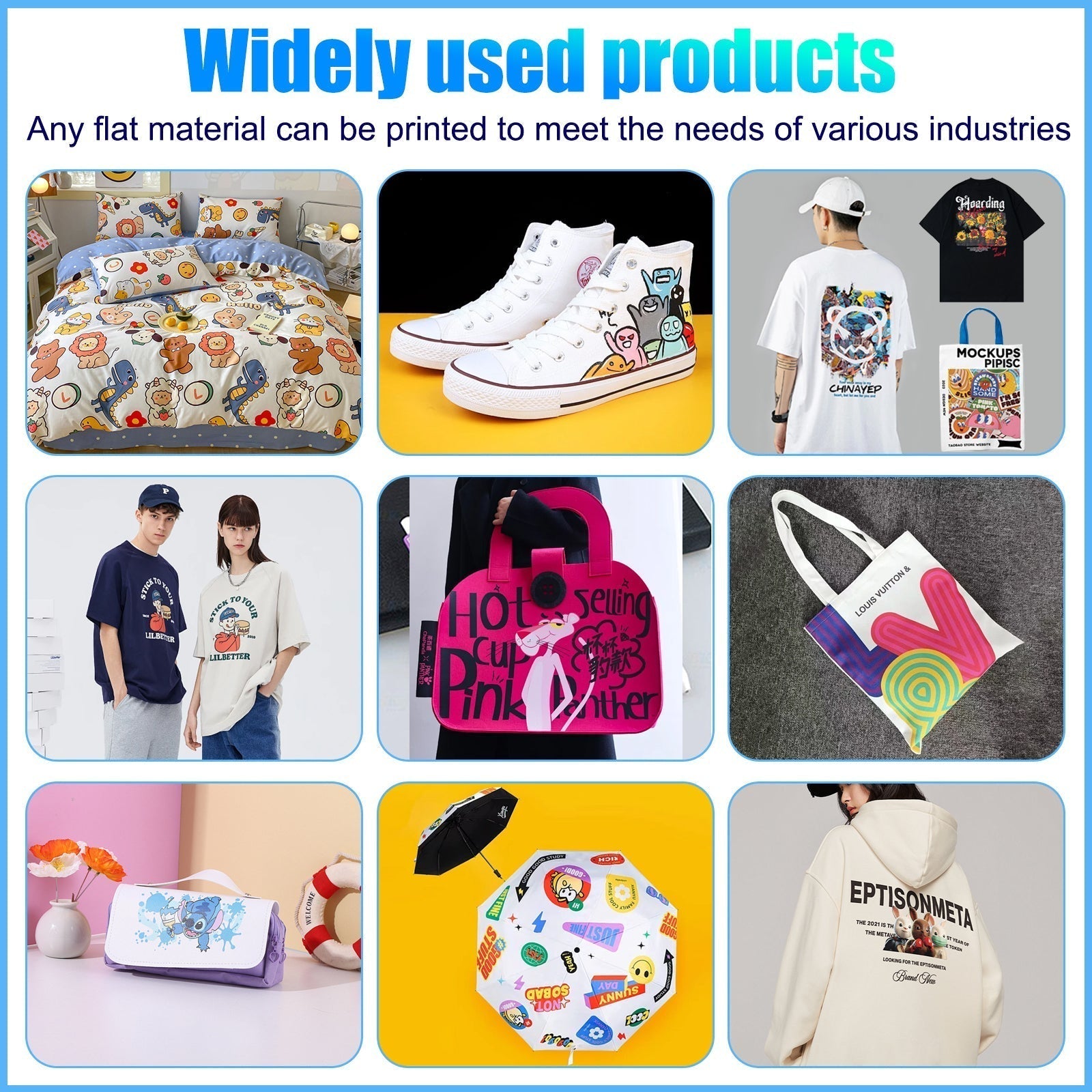
Choosing the right garment decoration technology is crucial for your business success.
While White Toner Printers (often using laser or specific inkjet methods) have their niche, ACHI A3 Roll DTF Printer represents a significant leap forward in versatility, quality, and ease of use for most apparel applications.
Let's break down the key differences.
1. Application Scope & Material Compatibility:
- White Toner Printers: Primarily designed for direct printing onto specific ready-made garments, often limited to polyester or poly-cotton blends. Printing on dark garments requires pre-coating the garment itself before printing, adding steps and complexity. Handling diverse items (like hats, bags, socks) or mixed fabrics can be challenging or impossible.
-
ACHI A3 Roll DTF Printer: Utilizes Direct-to-Film technology. Designs (including vibrant colors and a crisp white underbase) are printed onto a special PET film. Powder is applied, melted (cured), and then the design is transferred onto the garment using a heat press. This means:
- True Material Freedom: Easily print on 100% cotton, polyester, blends, sweatshirts, hoodies, denim, canvas bags, hats, shoes – virtually any textile that withstands heat pressing.
- Off-Garment Printing: Production isn't tied to having the final item loaded; print rolls of film in advance, then press onto garments as needed. Ideal for batch production and inventory management.
- No Pre-Treatment: Eliminates the messy step of manually coating garments before printing.
2. Color Vibrancy & Opacity:
- White Toner Printers: Can produce good results on light garments. Achieving bright, opaque whites and vibrant colors on dark garments heavily depends on the pre-coating process and can sometimes appear thinner or less vibrant, especially under stretch.
-
ACHI A3 Roll DTF Printer:
- Superior White Underbase: The melted powder creates a thick, exceptionally opaque white layer that provides a flawless foundation for colors on the darkest fabrics.
- Vibrant CMYK Colors: Pigment inks layered over the dense white base deliver outstanding color saturation, brightness, and sharpness, rivaling screen printing.
- Consistent Results: The transfer process ensures consistent opacity and color across the entire print run.
3. Durability & Feel:
- White Toner Printers: Prints are fused directly into the garment fibers. While durable when done correctly, the feel can sometimes be slightly stiff, especially with heavier toner deposits or pre-coats. Durability on stretchy fabrics can vary.
- ACHI A3 Roll DTF Printer: Modern DTF films and powders create transfers that are remarkably soft, flexible, and durable. They withstand numerous industrial washes without cracking or peeling. The feel is often described as very close to direct-to-garment (DTG) but with far superior wash durability and color vibrancy on darks.
4. Production Workflow & Efficiency:
- White Toner Printers: Require garment pre-treatment (for darks), precise loading onto the platen/feed mechanism, printing, and then curing. This limits throughput and requires constant operator attention per garment.
-
ACHI A3 Roll DTF Printer:
- High-Volume Potential: Print hundreds of designs continuously onto rolls of film .
- Decoupled Processes: Printing and heat pressing are separate steps. Printed rolls can be stored and pressed as orders come in. Multiple presses can handle the output of one printer.
- Automated Powder Shaking/Curing (Integrated Option): Many ACHI A3 systems include automated powder shaking and curing units, streamlining the process significantly compared to manual powder application and external curing ovens.
- Simplified Operation: Loading rolls of film is generally faster and less fiddly than loading individual garments onto a printer platen for every print.

5. Initial Investment & Running Costs:
- White Toner Printers: Often have a lower upfront equipment cost compared to full DTF systems. However, toner/ink and specialized pre-treatment coatings can be expensive per print.
-
ACHI A3 Roll DTF Printer: Represents a higher initial investment due to the printer, powder shaker, and curing oven (often integrated into one system). However:
- Competitive Cost-Per-Print: DTF ink, film, and powder costs are generally lower than toner-based systems or DTG ink, making it highly cost-effective, especially for medium to large runs.
- Reduced Waste: Less spoilage from misprinted garments as errors occur on film before transfer.
- Broader Revenue Streams: The ability to print on almost any item opens up vastly more market opportunities, improving ROI.
Why the ACHI A3 Roll DTF Printer Stands Out:
The ACHI A3 isn't just any DTF printer; it's designed for professional results and reliable production:
- Robust Roll-to-Roll System: Handles large film rolls efficiently for continuous, high-volume output.
- Integrated Powder & Cure (Common Configuration): Simplifies the workflow beyond basic DTF setups, enhancing productivity and consistency.
- Precision Engineering: Ensures accurate ink placement and reliable film feeding, minimizing waste.
- User-Centric Design: Focuses on ease of operation and maintenance for smooth production days.
- Large Format Capability (A3 Size): Allows printing bigger designs or multiple smaller designs per pass efficiently.

-
Posted in
DTF printer
